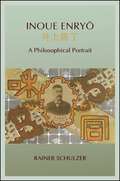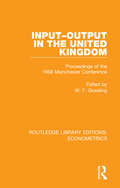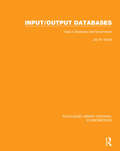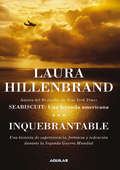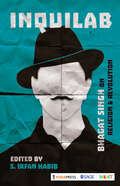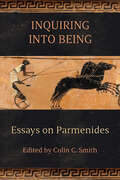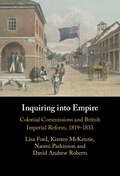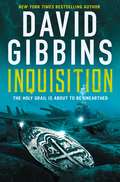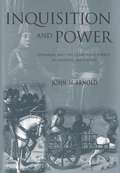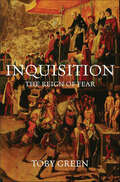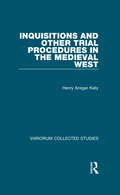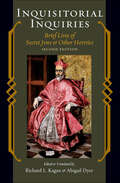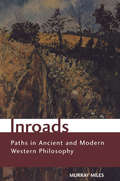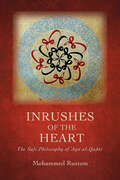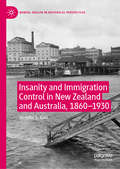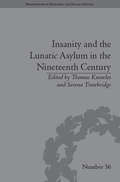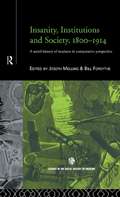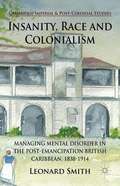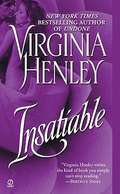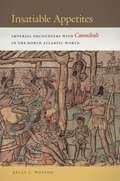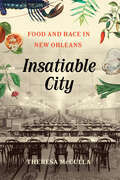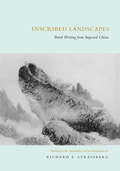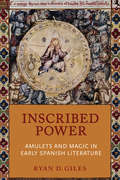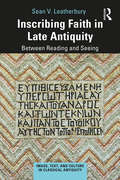- Table View
- List View
Inoue Enryō: A Philosophical Portrait
by Rainer SchulzerRainer Schulzer provides the first comprehensive study, in English, of the modern Japanese philosopher Inoue Enryō (1858–1919). Enryō was a key figure in several important intellectual trends in Meiji Japan, including the establishment of academic philosophy, the public campaign against superstition, the permeation of imperial ideology, and the emergence of modern Japanese Buddhism. As one of the most widely read intellectuals of his time and one of the first Japanese authors ever translated into Chinese, an understanding of Enryō's work and influence is indispensable for understanding modern East Asian intellectual history. His role in spreading the terminology of modern East Asian humanities reveals how later thinkers such as Nishida Kitarō and Suzuki T. Daisetsu emerged; while his key principles, Love of Truth and Protection of Country, illustrate the tensions inherent in Enryō's enlightenment views and his dedication to the rise of the Japanese empire. The book also presents a systematic reconstruction of what was the first attempt to give Buddhism a sound philosophical foundation for the modern world.
Input-Output in the United Kingdom: Proceedings of the 1968 Manchester Conference (Routledge Library Editions: Econometrics #5)
by W. F. GosslingOriginally published in 1970. Input-output analysis has been described as the "lynch-pin of modern economic planning". Its purpose is to trace the consequences of any economic change through each sector of the economy; to measure, for example, the effects of an increase in fuel tax on the price of food, or of an expansion in car production on the country’s import bill. This kind of knowledge is clearly essential for making economic predictions. This book presents the proceedings of the 1968 Manchester Conference including six outline papers, each followed by discussion, and several summaries of ongoing and proposed research which were added afterwards. The speakers and participants constituted a representative sample of persons from Industry and Commerce, as well as the Universities and the Civil Service.
Input/Output Databases: Uses in Business and Government (Routledge Library Editions: Econometrics #7)
by Jay M. GouldOriginally published in 1979. An Input/output database is an information system carrying current data on the intermediate consumption of any product or service by all the specified major firms that consume it. This book begins with a survey of how the interrelationships of an economic system can be represented in a two-dimensional model which traces the output of each economic sector to all other sectors. It talks about how the use of such databases to identify major buyers and sellers can illuminate problems of economic policy at the national, regional, and corporate level and aid in analyzing factors affecting the control of inflation, energy use, transportation, and environmental pollution. The book discusses how advances in database technology, have brought to the fore such issues as the right to individual privacy, corporate secrecy, the public’s right of access to stored data, and the use of such information for national planning in a free-enterprise society.
Inquebrantable
by Laura HillenbrandRetrato de la extraordinaria historia de Louie Zamperini, un atleta olímpico que se convirtió en aviador de la Segunda Guerra Mundial, en náufrago y en prisionero japonés. Inquebrantable fue adaptada en 2014 por Angelina Jolie, película que tuvo 3 nominaciones a los premios Oscar y fue incluida por el American Film Institute en el Top 10 de las mejores películas del año. Una historia de supervivencia, valor y resistencia durante la Segunda Guerra Mundial. Louie Zamperini, niño problemático, atleta olímpico, aviador durante la Segunda Guerra Mundial, náufrago en el Pacífico Sur, prisionero de los japoneses... un superviviente. Junio, 1943. Louie Zamperini, bombardero de la Segunda Guerra Mundial y atleta olímpico, se encuentra tendido sobre una pequeña balsa a la deriva en la inmensidad del océano Pacífico. Junto a él yacen otros dos compañeros. Sus cuerpos están abrasados por el sol y un grupo de tiburones los acecha cada minuto. Llevan 27 días sin rumbo y hace mucho que perdieron la esperanza de ser rescatados. Un sonido metálico los alerta... es un avión -pueden ver su destello a lo lejos-, Zamperini arroja dos bengalas. Los náufragos se desesperan, pero de pronto lo ven reaparecer. La tripulación los ha visto. El avión empieza a descender y los hombres se percatan con espanto de que se trata de un bombardero japonés y de que ellos son su objetivo. No hay salida. Así comienza Inquebrantable, una de las historias reales más impactantes de la Segunda Guerra Mundial. Laura Hillenbrand, autora de Seabiscuit, articula con la destreza de las grandes novelistas la vida de un hombre extraordinario que tuvo una infancia complicada, que descubrió que poseía un increíble don para correr que lo llevó a participar en los Juegos Olímpicos de Berlín y que se convirtió en aviador durante la guerra, una experiencia dramática que lo puso al límite envarias ocasiones. Una obra imprescindible cuya lectura atrapa desde las primeras páginas, una historia de supervivencia, valor y resistencia que no dejará indiferente a nadie. Una odisea contemporánea.
Inquilab: Bhagat Singh on Religion & Revolution
by S Irfan HabibExtolled for his extraordinary courage and sacrifice, Bhagat Singh is one of our most venerated freedom fighters. He is valourised for his martyrdom, and rightly so, but in the ensuing enthusiasm, most of us forget, or consciously ignore, his contributions as an intellectual and a thinker. He not only sacrificed his life, like many others did before and after him, but he also had a vision of independent India. In the current political climate, when it has become routine to appropriate Bhagat Singh as a nationalist icon, not much is known or spoken about his nationalist vision. Inquilab: Bhagat Singh on Religion and Revolution provides a corrective to such a situation by bringing together some of Bhagat Singh′s seminal writings on his pluralist and egalitarian vision. In doing so, it compels the reader to see that while continuing to celebrate the memory of Bhagat Singh as a martyr and a nationalist, we must also learn about his intellectual legacy. This important book also makes a majority of these writings, hitherto only available in Hindi, accessible for the first time to the English-language readership.
Inquiring into Being: Essays on Parmenides (SUNY series in Ancient Greek Philosophy)
by Colin C. SmithNew essays on early Greek natural philosopher Parmenides, who is perhaps the originator of metaphysics.Inquiring into Being is a study of Parmenides, the early Greek pre-Socratic philosopher often credited as the first metaphysician and whose sole written work was a philosophical poem. In his poem, Parmenides has a narrating goddess character indicate the sense of being that must be and cannot be as a corrective to the errors mortals make when accounting for the ultimate nature of reality while showing a keen scientific understanding of natural phenomena. Inquiring into Being brings together and further develops recent work on Parmenides and the surviving fragments of his text through twelve chapters by scholars from the United States and United Kingdom working in analytic and continental philosophy, classics, political theory, literary theory, and the history of science. It serves as a guide through many of the interpretive controversies in Parmenides's poem while offering new insights into Parmenides's role as poet, scientist, natural philosopher, and investigator into the nature of being.
Inquiring into Empire: Colonial Commissions and British Imperial Reform, 1819–1833
by Kirsten McKenzie Lisa Ford Naomi Parkinson David Andrew RobertsThis is the first history to grapple with the vast project of British imperial investigation in the years between the Battle of Waterloo in 1815 and the Great Reform Act. Beginning in 1819, commissions of inquiry were sent to examine law, governance, and economy from New South Wales and the Caribbean to Malta and West Africa. They left behind a matchless record of colonial life in the form of papers, reports and more than 200 volumes of testimonies and correspondence. Inquiring into Empire taps this under-used archive to develop a new understanding of imperial reform. The authors argue that, far from being a first step in the march towards liberalism, the commissions represented a deeply pragmatic, messy but concerted effort to chart a middle way between reaction and revolution which was constantly buffeted by the politics of colonial encounter.
Inquisition (Jack Howard #10)
by David GibbinsThe latest Jack Howard thriller from internationally bestselling mastermind David Gibbins.258As the blood of martyred Christians runs through Rome's catacombs, Pope Sixtus entrusts their most sacred object to a devoted follower. Soon after, the Holy Grail disappears into the darkness of time.1684 While overseeing the evacuation of the English colony of Tangier, Samuel Pepys attempts to retrieve a treasure which has resurfaced after more than a thousand years. Meanwhile, a Jewish merchant is tortured by the Altamanus, a secret group determined to locate the Grail.Present DayA wreck off the Cornish coast reveals clues to a mystery that marine archaeologist Jack Howard had thought beyond solving. He embarks on an epic quest that takes him to the sunken ruins of the pirate city of Port Royal in Jamaica. But the specter of the deadly Inquisition dogs his every step, and Jack must face a descent into hell itself if he is to uncover the greatest reward in Christendom.Gibbins, who has led numerous underwater archeology expeditions around the world, writes with an authority that makes “the astounding seem more than plausible” (Parmenion Books). This latest Jack Howard novel brings together historical details and a thrilling plot for an action-packed adventure.
Inquisition and Power
by John H. ArnoldWhat should historians do with the words of the dead? Inquisition and Power reformulates the historiography of heresy and the inquisition by focusing on depositions taken from the Cathars, a religious sect that opposed the Catholic church and took root in southern France during the twelfth century. Despite the fact that these depositions were spoken in the vernacular, but recorded in Latin in the third person and rewritten in the past tense, historians have often taken these accounts as verbatim transcriptions of personal testimony. This belief has prompted some historians, including E. Le Roy Ladurie, to go so far as to retranslate the testimonies into the first-person. These testimonies have been a long source of controversy for historians and scholars of the Middle Ages.Arnold enters current theoretical debates about subjectivity and the nature of power to develop reading strategies that will permit a more nuanced reinterpretation of these documents of interrogation. Rather than seeking to recover the true voice of the Cathars from behind the inquisitor's framework, this book shows how the historian is better served by analyzing texts as sites of competing discourses that construct and position a variety of subjectivities. In this critically informed history, Arnold suggests that what we do with the voices of history in fact has as much to do with ourselves as with those we seek to 'rescue' from the silences of past.
Inquisition: The Reign of Fear
by Toby GreenA journey across centuries of religious conflict Toby Green's incredible new book brings a vast panorama to life by focusing on the untold stories of individuals from all walks of life and every section of society who were affected by the Inquisition. From witches in Mexico, bigamists in Brazil, Freemasons, Hindus, Jews, Moslems and Protestants, the Inquisition reached every aspect of society. This history, though filled with stories of terror and the unspeakable ways in which human beings can treat one another, is ultimately one of hope, underscoring the resilience of the human spirit. Stretching from the unification of Spain under Ferdinand and Isabella in the fifteenth century to the Napoleanic wars, The Inquisition details this incredible history in all its richness and complexity.
Inquisitions and Other Trial Procedures in the Medieval West (Variorum Collected Studies)
by H.A. Kelly'Inquisition' was the new form of criminal procedure that was developed by the lawyer-pope Innocent III and given definitive form at the Fourth Lateran Council of 1215. It has since developed a notoriety which has obscured the reality of the procedure, and it is this that Professor Kelly is first concerned with here. In contrast to the old Roman system of relying on a volunteer accuser-prosecutor, who would be punished in case of acquittal, the inquisitorial judge himself served as investigator, accuser, prosecutor, and final judge. A probable-cause requirement and other safeguards were put in place to protect the rights of the defendant, but as time went on some of these defences were modified, abused, or ignored, most notoriously among papally appointed heresy-inquisitors; but in all cases appeal and redress were at least theoretically possible. Unlike continental practice, in England inquisitorial procedure was mainly limited to the local church courts, while on the secular side native procedures developed, most notably a system of multiple investigators/accusers/judges, known collectively as the jury. Private accusers, however, were still to be seen, illustrated here in the final pair of studies on 'appeals' of sexual rape.
Inquisitorial Inquiries: Brief Lives of Secret Jews and Other Heretics
by Richard L. Kagan Abigail DyerOn the first day of Francisco de San Antonio's trial before the Spanish Inquisition in Toledo in 1625, his interrogators asked him about his parentage. His real name, he stated, was Abram Rubén, and he had been born in Fez of Jewish parents. How then, Inquisitors wanted to know, had he become a Christian convert? Why had a Hebrew alphabet been found in his possession? And what was his business at the Court in Madrid? "He was asked," according to his dossier, "for the story of his life." His response, more than ten folios long, is one of the many involuntary autobiographies created by the logic of the Inquisition that today provide rich insights into both the personal lives of the persecuted and the social, cultural, and political realities of the age.In the first edition of Inquisitorial Inquiries, Richard L. Kagan and Abigail Dyer collected, translated, and annotated six of these autobiographies from a diverse group of prisoners. Now they add the fascinating life story of another victim of the Inquisition: Esteban Jamete, a French sculptor accused of being a Protestant. Each of the autobiographies has been selected to represent a particular political or social issue, while at the same time raising more intimate questions about the religious, sexual, political, or national identities of the prisoners. Among them are a politically incendiary prophet, a self-proclaimed hermaphrodite, and a morisco, an Islamic convert to Catholicism.
Inroads
by Murray MilesThis unique introduction to philosophy is designed as a companion volume to a number of classic philosophical texts widely used in first- and upper-year philosophy courses. While remaining clear and readable, Inroads provides detailed analyses of fundamental issues in metaphysics and morals: the existence of God, the meaning of death, and the elements and definitions of the 'good life' for humankind.Combining a historical with a systematic approach, Murray Miles's work straddles the customary divisions between ancient and modern, and Anglo-American and continental European philosophy. In each of its five main parts - in turn, focusing on Socrates, Plato, Descartes, Hume, and Sartre - Inroads discusses, from a philosophical rather than a religious or scientific perspective, those questions that make up the common inheritance of academic philosophy and ethico-religious thought. Other features include a detailed glossary of philosophical terms, suggestions for further reading, and questions for reflection and review. Inroads is a useful text for first-year undergraduate courses or, equally, a sound resource for the general reader looking for a good grounding in philosophy and its history.
Inrushes of the Heart: The Sufi Philosophy of ʿAyn al-Quḍāt (SUNY series in Islam)
by Mohammed RustomInrushes of the Heart delves deeply into the life and thought of 'Ayn al-Quḍāt Hamadānī (d. 525/1131), a major Muslim philosopher, Sufi master, and religious judge who was executed by the Seljuq government at the age of thirty-four. Mohammed Rustom presents nearly eight hundred passages in translation (most of which appear here for the first time in English) from 'Ayn al-Quḍāt's Arabic and Persian writings alongside a step-by-step commentary that outlines every major theme that guides his worldview. Contextualizing 'Ayn al-Quḍāt's life, influence, and self-perception as a teacher and scholar extraordinaire, the book then carefully unpacks his highly original teachings on God, cosmology, human agency, spiritual practice, imagination, death, knowledge, scripture, beauty, and love.
Insanity and Immigration Control in New Zealand and Australia, 1860–1930 (Mental Health in Historical Perspective)
by Jennifer S. KainThis book examines the policy and practice of the insanity clauses within the immigration controls of New Zealand and the Commonwealth of Australia. It reveals those charged with operating the legislation to be non-psychiatric gatekeepers who struggled to match its intent. Regardless of the evolution in language and the location at which a migrant’s mental suitability was assessed, those with ‘inherent mental defects’ and ‘transient insanity’ gained access to these regions. This book accounts for the increased attempts to medicalise border control in response to the widening scope of terminology used for mental illnesses, disabilities and dysfunctions. Such attempts co-existed with the promotion of these regions as ‘invalids’ paradises’ by governments, shipping companies, and non-asylum doctors. Using a bureaucratic lens, this book exposes these paradoxes, and the failings within these nineteenth- and early twentieth-century Australasian nation-state building exercises.
Insanity and Sanctity in Byzantium
by Youval RotmanIn the Roman and Byzantine Near East, the holy fool emerged in Christianity as a way of describing individuals whose apparent madness allowed them to achieve a higher level of spirituality. Youval Rotman examines how the figure of the mad saint or mystic was used as a means of individual and collective transformation prior to the rise is Islam.
Insanity and the Lunatic Asylum in the Nineteenth Century (Perspectives in Economic and Social History #36)
by Serena TrowbridgeThe nineteenth-century asylum was the scene of both terrible abuses and significant advancements in treatment and care. The essays in this collection look at the asylum from the perspective of the place itself – its architecture, funding and purpose – and at the experience of those who were sent there.
Insanity, Institutions and Society, 1800-1914 (Routledge Studies in the Social History of Medicine)
by Joseph Melling Bill ForsytheThis comprehensive collection provides a fascinating summary of the debates on the growth of institutional care during the nineteenth and twentieth centuries. Revising and revisiting Foucault, it looks at the significance of ethnicity, race and gender as well as the impact of political and cultural factors, throughout Britain and in a colonial context. It questions historically what it means to be mad and how, if at all, to care.
Insanity, Race and Colonialism
by Leonard SmithDespite emancipation from the evils of enslavement in 1838, most people of African origin in the British West Indian colonies continued to suffer serious material deprivation and racial oppression. This book examines the management and treatment of those who became insane, in the period until 1914. The exposure of deplorable conditions and flagrant abuses in the public lunatic asylum in Kingston, Jamaica, in the late 1850s exemplified the defective nature of provision for mentally disordered people throughout the region. Thereafter, British-inspired 'civilising' reforms were gradually implemented in the main Caribbean territories. However, in some of the region's other colonies, improvements were little more than cosmetic. The circumstances that propelled people into the lunatic asylums are explored, as are the characteristics and experiences of those who inhabited the institutions. The dilemmas and contradictions apparent in asylum management highlighted the perennial difficulties of the British imperial project in action.
Insatiable
by Virginia HenleyNew York Times bestselling author Virginia Henley weaves an enchanting tale of passion and intrigue in England's Golden Age-where a woman's reckless search for adventure leads her to the man destined to claim her. . . Catherine Seton Spencer, a young maiden of Queen Elizabeth's court, is cursed with impulsiveness. When she meets Patrick Hepburn, who's visiting the court after a tour of duty patrolling the Scottish borderlands, Cat thinks he's an arrogant brute-and Patrick thinks Cat's a spoiled shrew. Divided by loyalties and society, but bound by desire that drives them into each other's arms, Cat and Patrick find themselves in an intricate web of deceit and danger that threatens to topple the throne-and tear the lovers apart. .
Insatiable Appetites: Imperial Encounters with Cannibals in the North Atlantic World (Early American Places #14)
by Kelly L. WatsonA comparative history of cross-cultural encounters and the critical role of cannibalism in the early modern periodCannibalism, for medieval and early modern Europeans, was synonymous with savagery. Humans who ate other humans, they believed, were little better than animals. The European colonizers who encountered Native Americans described them as cannibals as a matter of course, and they wrote extensively about the lurid cannibal rituals they claim to have witnessed. In this definitive analysis, Kelly L. Watson argues that the persistent rumors of cannibalism surrounding Native Americans served a specific and practical purpose for European settlers. These colonizers had to forge new identities for themselves in the Americas and find ways to not only subdue but also co-exist with native peoples. They established hierarchical categories of European superiority and Indian inferiority upon which imperial power in the Americas was predicated. In her close read of letters, travel accounts, artistic renderings, and other descriptions of cannibals and cannibalism, Watson focuses on how gender, race, and imperial power intersect within the figure of the cannibal. Watson reads cannibalism as a part of a dominant European binary in which civilization is rendered as male and savagery is seen as female, and she argues that as Europeans came to dominate the New World, they continually rewrote the cannibal narrative to allow for a story in which the savage, effeminate, cannibalistic natives were overwhelmed by the force of virile European masculinity. Original and historically grounded, Insatiable Appetites uses the discourse of cannibalism to uncover the ways in which difference is understood in the West.
Insatiable City: Food and Race in New Orleans
by Theresa McCullaA history of food in the Crescent City that explores race, power, social status, and labor. In Insatiable City, Theresa McCulla probes the overt and covert ways that the production of food and the discourse about it both created and reinforced many strains of inequality in New Orleans, a city significantly defined by its foodways. Tracking the city’s economy from nineteenth-century chattel slavery to twentieth-century tourism, McCulla uses menus, cookbooks, newspapers, postcards, photography, and other material culture to limn the interplay among the production and reception of food, the inscription and reiteration of racial hierarchies, and the constant diminishment and exploitation of working-class people. The consumption of food and people, she shows, was mutually reinforced and deeply intertwined. Yet she also details how enslaved and free people of color in New Orleans used food and drink to carve paths of mobility, stability, autonomy, freedom, profit, and joy. A story of pain and pleasure, labor and leisure, Insatiable City goes far beyond the task of tracing New Orleans's culinary history to focus on how food suffuses culture and our understandings and constructions of race and power.
Inscribed Landscapes: Travel Writing from Imperial China
by Richard E. StrassbergAlongside the scores of travel books about China written by foreign visitors, Chinese travelers' impressions of their own country rarely appear in translation. This anthology is the only comprehensive collection in English of Chinese travel writing from the first century A.D. through the nineteenth. Early examples of the genre describe sites important for their geography, history, and role in cultural mythology, but by the T'ang dynasty in the mid-eighth century certain historiographical and poetic discourses converged to form the "travel account" (yu-chi) and later the "travel diary" (jih-chi) as vehicles of personal expression and autobiography. These first-person narratives provide rich material for understanding the attitudes of Chinese literati toward place, nature, politics, and the self.The anthology is abundantly illustrated with paintings, portraits, maps, and drawings. Each selection is meticulously translated, carefully annotated, and prefaced by a brief description of the writer's life and work. The entire collection is introduced by an in-depth survey of the rise of Chinese travel writing as a cultural phenomenon. Inscribed Landscapes provides a unique resource for travelers as well as for scholars of Chinese literature, art, and history.
Inscribed Power: Amulets and Magic in Early Spanish Literature
by Ryan D. GilesIn Inscribed Power, Ryan D. Giles explores the function of amuletic prayers, divine names, and incantation formulas that were inscribed and printed on parchment, paper and other media, and at the same time inserted into classic literary works in Spain. Giles’ insightful analysis of the intersection between amulets and literary texts offers fresh and original interpretations of well-known texts such as the Poema de mío Cid, the Libro de Alexandre, the Libro de buen amor, Celestina, Lazarillo de Tormes, and the Buscón. Inscribed Power is a fascinating work that highlights specific amuletic texts that were used to heal, protect, or otherwise provide a blessing or curse to discover how their powers could influence fictional lives at different moments in the development of Spanish literature.
Inscribing Faith in Late Antiquity: Between Reading and Seeing (Image, Text, and Culture in Classical Antiquity)
by Sean V. LeatherburyInscribing Faith in Late Antiquity considers the Greek and Latin texts inscribed in churches and chapels in the late antique Mediterranean (c. 300–800 CE), compares them to similar texts from pagan, Jewish, and Muslim spaces of worship, and explores how they functioned both textually and visually. These texts not only recorded the names and prayers of the faithful, but were powerful verbal and visual statements of cultural values and religious beliefs, conveying meaning through their words as well as through their appearances. In fact, the two were intimately connected. All of these texts – Christian, Jewish, Muslim, and pagan – acted visually, embracing their own materiality as mosaic, paint, or carved stone. Colourful and artfully arranged, the inscriptions framed human relationships with the divine, encouraged responses from readers, and made prayers material. In the first in-depth examination of the inscriptions as words and as images, the author reimagines the range of aesthetic, cultural, and religious experiences that were possible in spaces of worship. Inscribing Faith in Late Antiquity is essential reading for those interested in Roman, late antique, and Byzantine material and visual culture, inscriptions and other texts, and religious life in the ancient Mediterranean.
